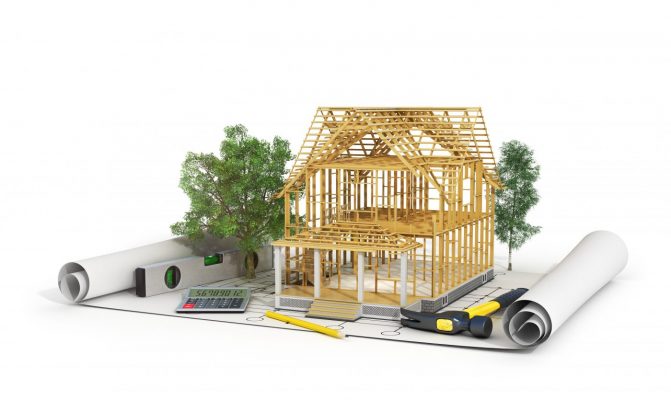Close your eyes and imagine a perfect place – the place you go to in your mind when you are tired or stressed. It may be a real place or a figment of your imagination, but it never fails to improve your mood. Now answer these questions: Is it stuffy? Is it dull and drab? Is it even inside? Most likely it is a vibrant, bright, uplifting space. If an interior, it probably has a big window or flame – a fireplace, stove, or candle – as its focus. If its outside, chances are it has a great view, with water nearby.
We gravitate towards such environments, and away from dull, homogenous spaces with good reason. We have evolved over millions of years in the conditions we find ideal, which is why our health and spirits respond to certain environments. An optimum ambience is one that’s moderately humid, radiantly warm, where the air is clean and slightly negatively charged, and where natural materials surround us. This is generally outdoors.
Our DNA is designed for these conditions and anything inferior places us under stress. As with any stress, younger and fitter individuals cope better; older more delicate people struggle, but in less-than-perfect indoor environments, we are all coping instead of thriving.
Much of the quality of our interior space depends on the type of materials we use to make our buildings, particularly our interiors. This makes the proliferation of unhealthy interiors in modern buildings all the more incomprehensible – it doesn’t have to be this way. It is possible to create a building whose interior is radiantly warm, uplifting, invigorating, and healthy simply by using natural materials in structure, insulation, finishes, decoration, and furniture.
Most of us in green design are pragmatic about the artificial chemicals in modern construction. The less, the better – obviously, and the closer our buildings are to the conditions found in nature, the more likely they are to be good for us. Nonetheless, thousands of chemicals find their way into our buildings. Many of these are untested in real, dynamic situations or in the combinations in which they are used, and all of them affect us.
Many of our interiors are several times more polluted than the street outside, even a city-centre street. As with any toxin, level of exposure or dosage determines risk and since we spend much of our time inside, it’s best to avoid synthetic materials altogether. This gives our bodies a rest, allowing them to thrive rather than cope.
Natural materials suitable for the home come from a wide variety of sources, all natural or safe. They can be found in nature, both wild and cultivated, harvested from plant, animal, sea, and even diverted and upcycled from the waste stream. We can get insulation from seaweed and sheep’s wool, and even upcycle it from old newspapers. We can replace carcinogenic glues in kitchen cabinets by using the boards that have natural glues (such as lignin found in trees) and can avoid the need for harmful preservatives in timber by using wood infused with harmless acetic acid, i.e., vinegar. We can eliminate air borne VOCs (volatile organic compounds) in paints, upholstery, and coatings with natural low off-gassing products.
There is, of course, another important reason for choosing natural materials beyond wanting to protect our health; such materials spare the environment as well. In choosing insulations, for instance, one can select two different materials that will provide the exact same heat retention (albeit for different thicknesses). The first, cellulose, which because of how it is manufactured, pays back its climate change ‘debt’ in six months and the alternative, XPS extruded polystyrene which takes 120 years.
Having said all that, care is needed in choosing materials, and the conditions for which materials will be used must be considered. Sometimes a material that can withstand heavy loads will be required – such as, under a concrete floor slab or for a prolonged wet, unventilated situation (such as, behind a basement wall) or both. In these circumstances, the use of XPS may be justified because natural materials would struggle. On the other hand, where materials can be kept dry, or will dry out quickly if they get wet, or are not bearing heavy weights, natural materials will be suitable.
To make external walls, we can use honeycomb terracotta blocks (fired earth uses less CO2 to make the brick than normal concrete blocks) which have air pores that make them both insulating, loadbearing and able to store heat. Alternatively, we can build walls from timber with softwood studs and natural insulation products such as wood fibre (of different densities and mixtures, some able to resist moisture), cellulose or sheep’s wool. For internal or dry lining, we can use Rockwool or Thermo Hemp (a favourite which combines thermal mass with insulation). A word of caution here, a study by Joseph Little in 2009 showed that there are practical limits to how much internal insulation (dry lining) can be applied to the inside of an existing external masonry wall before a major risk of condensation occurs, and mould develops on the face of the original masonry. This would be invisible but still dangerous to health; mould spores can reproduce and proliferate easily. The only possible defence is use of synthetic insulants and vapour proof (think plastic bag) sheeting to line the space – which doesn’t sound very healthy, does it?
When using natural insulation and materials, and for energy conservation reasons, airtightness combined with moisture (or vapour) control and breathability (of the space, wall, or roof) becomes critical. Again, finding a suite of sophisticated humidity responsive membranes such as the Pro Clima range can achieve this.
Lastly, we always recommend that walls and floors are finished in benign materials and decorative products. Low-formaldehyde wood flooring such Kahrs (which also allows for movement if used over underfloor heating) and organic paints such as Auro or Biofa are also high on our list of recommended products.
To compliment these sound material choices, one should also make sure the design has lots of daylight, a radiant heating system (or is designed to need no heating), has clean fresh air, and is run so that casual dirt and pollutants (outside dirt, scents, cigarette smoke etc) don’t find their way in. And of course, the entire building should be designed and built to be as energy efficient as possible.
While good materials alone are not sufficient to create a health-enhancing home, choosing the right products (think ingredients) is pretty much a prerequisite for avoiding problems. Your home should be a refuge, a tonic for the body – some call it a third skin – making you feel as balanced and rested as a long holiday.



